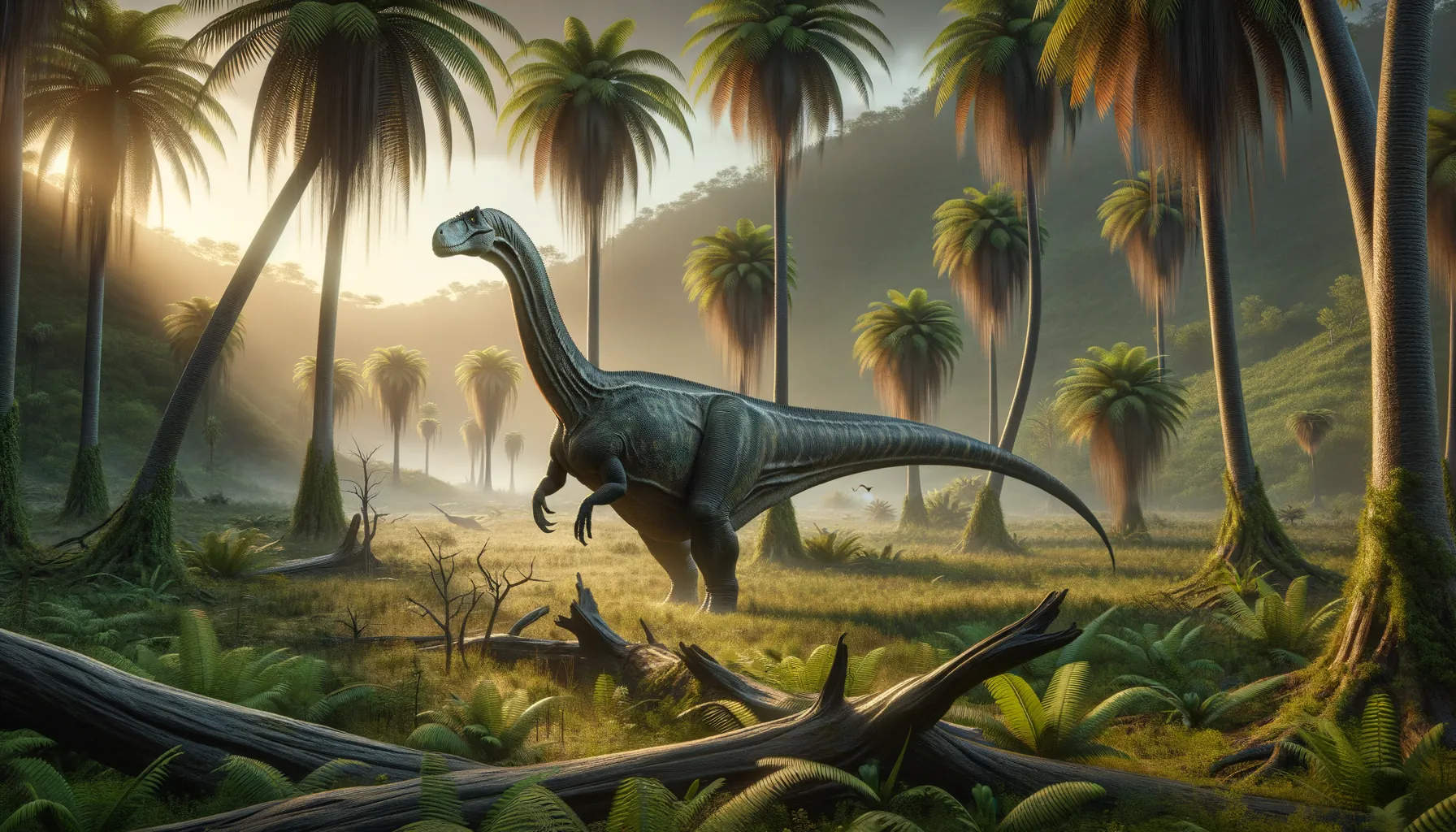
Aeolosaurus
A towering giant of the ancient world!
Period
Cretaceous
Length
Could reach lengths of up to 45 feet.
Height
Approximately 15 feet tall at the shoulder.
Weight
Ranged from 12 to 15 tons.
Aeolosaurus was a large, herbivorous dinosaur known for its long neck and tail, characteristic of the titanosaur group. It lived during the Late Cretaceous period in South America. With its hefty build and extensive reach, Aeolosaurus thrived in a variety of habitats, feeding on abundant vegetation. It provides valuable insights into the diversity and adaptability of sauropods during its time.
Diet
Aeolosaurus was a herbivore, primarily feeding on conifers, cycads, and other plant material available in its era. Its long neck allowed it to reach high into trees and cover large feeding areas without moving too much.
Hunting
As a herbivore, Aeolosaurus did not hunt. Instead, it foraged extensively for plants and utilized its size as a defense against predators, rather than engaging in active hunting behavior.
Environmental challenges
Living in the Late Cretaceous period, Aeolosaurus faced challenges like fluctuating climates and changes in vegetation. As large ecosystems shifted, it had to adapt its feeding strategies. Predatory dinosaurs and competition for food with other herbivores also presented survival challenges. However, its massive size and efficient digestive system helped it overcome some of these hurdles.
Speed
Likely a slow mover due to its massive size.
Lifespan
Estimated between 70 to 100 years.
First discovery
Described by Argentine paleontologists in 1987.
Fun Facts
- Aeolosaurus was a massive dinosaur that lived during the Late Cretaceous period, around 70 million years ago.
- Its name, Aeolosaurus, means 'Aeolus lizard,' named after the Greek god of the winds, which might reference its long, flowing tail.
- This dinosaur was a herbivore, meaning it fed on plants, and it likely roamed in large herds for protection.
- Aeolosaurus had long necks, which helped them reach leaves on tall trees.
- Fossils of Aeolosaurus have been primarily found in South America, particularly in Argentina.
- Despite its size, Aeolosaurus was thought to be relatively gentle and slow-moving, relying on its large size to deter predators.
- The discovery of Aeolosaurus has helped scientists understand more about the diversity and distribution of sauropods during the Late Cretaceous.
Growth and Development
Aeolosaurus likely experienced rapid growth during its early years to avoid being vulnerable to predators. Like other sauropods, it might have reached substantial size quickly before slowing down in growth as it matured. Development involved growing a powerful, extended neck and tail, essential for feeding and balance. Growth rings in its bones suggest periods of fast and slow growth, possibly linked to environmental conditions.
Habitat
Aeolosaurus inhabited semi-arid plains and open woodlands of what is now South America. These regions provided ample vegetation to sustain its massive size. Seasonal fluctuations could bring droughts or floods, requiring it to move between habitats. Rivers and floodplains were important parts of its ecosystem, offering both food and water resources.
Interaction with other species
Though primarily solitary or living in small groups, Aeolosaurus likely coexisted with other dinosaurs, including predators, requiring constant vigilance. Its interaction with such species mainly involved competition for resources. Its large size would deter most predators, though juveniles were more vulnerable. Fossils suggest some sauropods moved in herds, possibly including Aeolosaurus, to provide safety in numbers.
Natural lifespan
Its vast size suggests it naturally had a long lifespan.
Reproduction
Reproduction likely involved laying clusters of large eggs in nests, possibly in communal nesting grounds. Its reproductive success would have been tied to the safeguarding of these nests from predators. Evidence from related dinosaurs suggests parental care might have been minimal, the young being somewhat independent after hatching.
Social behaviour
Aeolosaurus may have exhibited some social behaviors, such as traveling in small groups mainly for protection. Communication might have involved low-frequency sounds, common among large sauropods, to interact over long distances. Cooperative behaviors could have been crucial for migration or when resources were scarce.
Fossil locations
Fossils of Aeolosaurus have been discovered primarily in Argentina, making it a key figure in South American paleontology. These fossils provide evidence of its distribution across regions that today encompass Chubut and Neuquén provinces. The remains allow scientists to reconstruct its environment and understand its interactions within ecosystems. Further fossil findings can expand our knowledge about its range and evolution within the continent.
